CC7 South Non-Destructive Testing (NDT) Plan and Data
NDT Testing was divided into three areas: Pre-Traffic Testing; Testing During Trafficking; and Post Traffic Testing.
Pre-Traffic Testing
Prior to the start of traffic testing, the NDT team performed the following tasks:
a. 2D/3D Imaging. With the use of the NDT Van, collected 2D/3D image data across the entirety of the CC7 test sections from East to West.
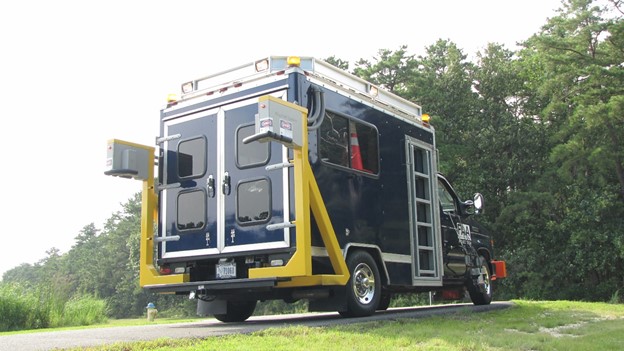
Imaging system on NDT van
b. Mobile Profiler. Took longitudinal profiles using the NDT van mobile profiler. All profiles were taken at the same time as the 2D/3D imaging. Locations of longitudinal and transverse profiles are shown in the figure below.
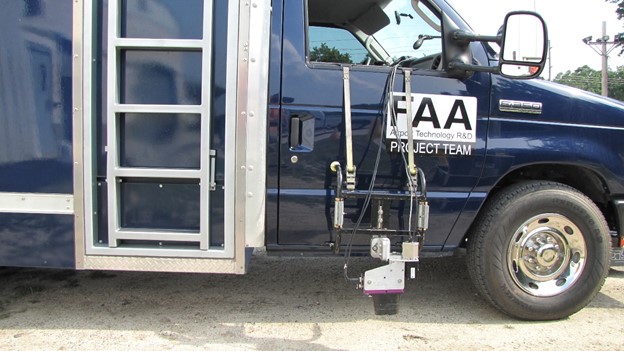
Mobile Profiler on NDT van
c. Joint Groove Profiler. Took baseline profiles at grooved locations in the transition areas. The locations are shown in the figure below.
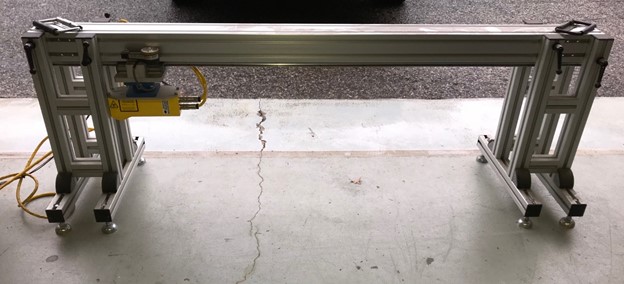
Joint Groove Profiler
d. GPR. Used the 900MHz GPR antenna (cart type) and mobile GPR utilizing the NDT van. Locations of longitudinal and transverse GPR paths are shown in the figure below.
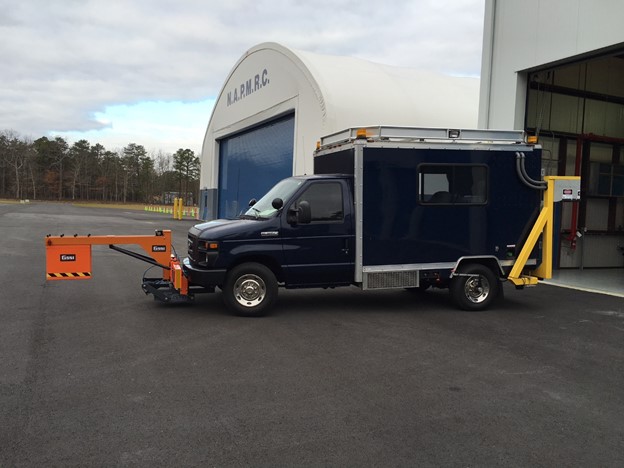
GPR on front of NDT van
e. PSPA. PSPA testing was conducted at all HWD locations. The locations are shown in the figure below.
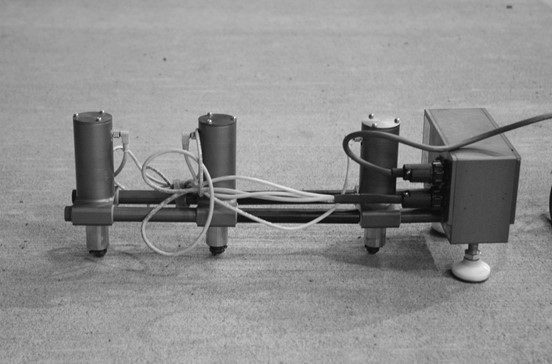
b. PSPA
f. HWD. After seating loads with the NAPTV were completed, HWD testing was conducted at the locations shown in the figure below. The target loading sequence was: 12,000 lbs., 24,000 lbs., and 36,000 lbs. with an approximate 36,000-lb seating load. As with the PSPA, baseline HWD readings were taken prior to trafficking. The deflection data was used for monitoring modulus changes using BAKFAA and the changing support conditions with increasing pass numbers.
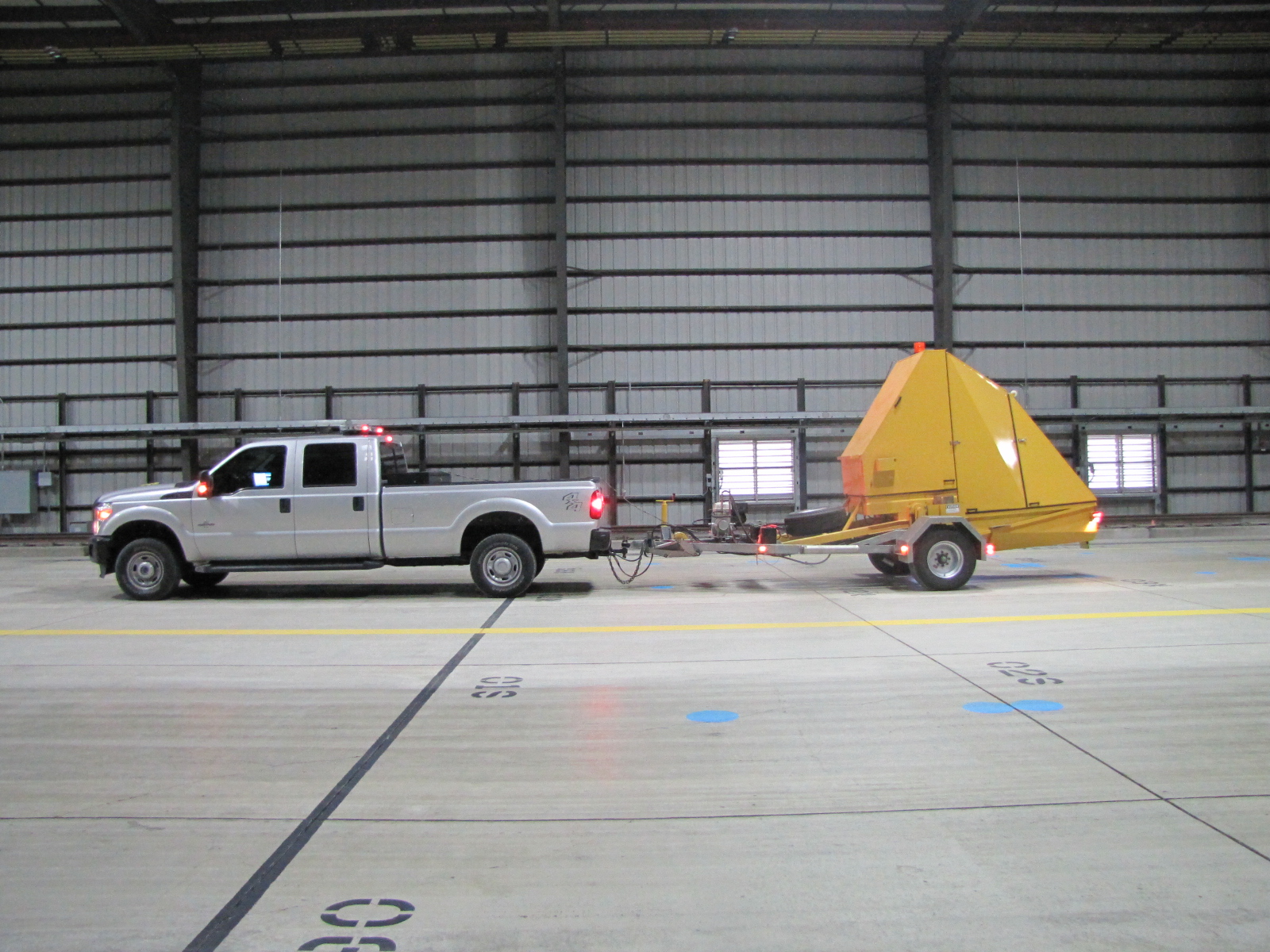
HWD
g. ELATexture. ELATexture readings were taken to monitor abrasion on the asphalt surface at both trafficked and non-trafficked areas as shown in the figure below.
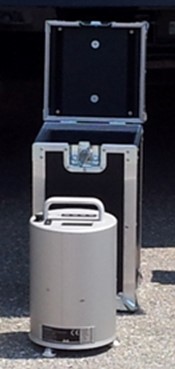
ELATextur
h. Rail to Rail Profiling. Profiles were taken across the full width of the CC7 pavement surface at 12 locations shown in the figure below. Two methods were used to calculate the rut depth of the collected profile measurements; the Base Line Method and the Straightedge Method.
For a description of the Rail-to-Rail Profiler and the different methods click here.
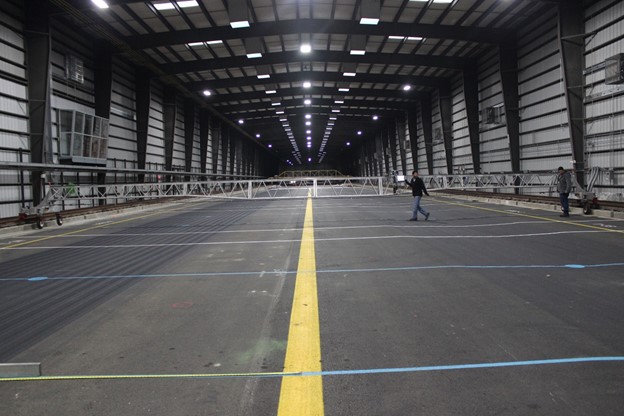
Rail to Rail Profiler
Prior to the start of trafficking, a baseline visual condition survey was performed on the asphalt surface.
To download the Execution of Traffic Test and Evaluation Plan for CC7, click here.
Testing During Trafficking
At the end of each day’s trafficking, a visual survey was performed to record distresses in accordance with ASTM D5340 along with rail to rail profiling and straight edge measurements. Weekly data collection consisted of ELATexture, HWD, joint and groove profiling, mobile GPR, mobile profiling, PSPA, and 2D/3D imaging.
Click here to be taken to the CC7 South Pavement Distress Map page.
Click here to be taken to the CC7 South Profiler Data/Rut Depths page.
Post Traffic Testing
All NDT tests conducted during trafficking were also completed after the final stage of trafficking.
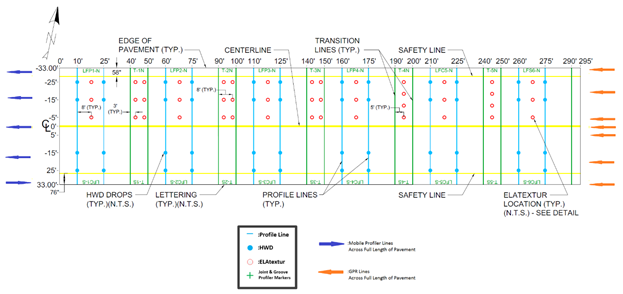
![]()
Click here to download the CC7 NDT Plan
Click here to download the CC7 South 2015 HWD data
Click here to download the CC7 South 2016 HWD data
Click here to download the CC7 South PSPA data
Return to Construction Cycle 7 Overview